What are the good plants with decorative leaves? By the fact that they retain their catchy beauty much longer than just blooming cultures. The bubbler loves many gardeners for the diverse color of the leaves. Among his varieties can be found views with yellow, orange, red, burgundy and even two- and tricolor foliage. From our article you will learn what is a bubbler, what the features of its landing and care, which cultural varieties are most often used in garden design and what their distinctive features are.
General description of bubbled
Bubble - this is a deciduous plant belonging to the family of rustic. A characteristic feature of most varieties of culture are beautiful, brightly colored leaves. The shade of foliage can be the most different, from the usual green to saturated yellow and even dark red.
The bubble bush consists of subtle shoots, the thickness of which does not exceed 2 cm in diameter. The roots of the plant are located in the surface layers of the soil, so it requires frequent and abundant irrigation. The bubble with ease tolerates heat, and as a place of growth chooses well-lit sections. The country of East Asia, North America, as well as China, Japan and Korea are considered the birthplace of this beautiful decorative culture. The period of blossoming in the bubble is not very long, it lasts from June to July. At this time, inflorescences consisting of small white boutons appear on the branches. However, the short period of flowering is not reflected on the decorativeness of the plant, because the main value in the landscape design is precisely the leaves of culture.
Popular varieties of bubbled
- The most common appearance, which can often be found in the gardens of Russia, is considered to be a bubbled "Diablo". Its foliage of a dark, rich burgundy shade can be the main highlight of any plant composition. The catchy color of shrubs is attracting all attention, so it should use such a variety in landscape design with caution. Too much of dark burgundy bushes among other plants can sometimes even spoil the appearance of the garden by making it gloomy. When disembarking a bubble "Diablo" it is important to pay attention to neighboring cultures. For example, against the background of yellow foliage of other plants, the color of this variety will look very dark, but the green foliage benefits the bushes of the bubble "Diablo". This variety is appropriate to plant near the white buildings and buildings, which only emphasize the brightness of the leaves.
- The bubbler of the "Red Baron" variety is something similar to the previous look, but the form of leaves is already already, and on the plate itself you can observe brightly pronounced red bodies. A bush in such a plant is average, grows about 2 m in height. Flowers "Red Baron" with light-pink shade with light-pink.
- Bubble "Summer Wine" is characterized by glossy red-brown foliage. Thanks to the brilliant surface of the leaves, when looking at the bush, it seems that it is made of metal. Small and compact bushes of this plant do not need frequent pruning, which makes a variety simple in care.
- The hybrid grade "Mindia" appeared as a result of the crossing of a saturated-red variety "Diablo" and a yellow-beette bubble. As a result of such hybridization, a plant appeared, the foliage of which has an orange, sometimes raspberry or light red shade.
- The bubble foliage "Center Glow" is painted immediately into several colors. The yellow-green core of the sheet plate smoothly goes into an orange shade, which turns into a burgundy brown on the edge of the leaf. The most visible similar transition to young bushes, more adult plants are painted in a dark wine color and only in the very middle of the leaves remain small yellow specks.
- The Diable d'OR variety, as well as the "Center Glow" described above, is also two-color. However, this species have a contrast of shades not so much. Most of the sheet plate is painted in a bronze tint, a sheet of leaf - light orange.
- A very interesting and attractive variety is the bubbler "LUTEUS". This tall bush reaches about 3 m in height, and the foliage attracts attention to its bright yellow. In the summer, the bush changes painting from yellow to brightly salad, and in the fall he again becomes golden. During the flowering period, the culture produces small white boutons collected into umbrella inflorescences. Especially bright are the young leaves of the plant, in the process of growing, they lose their yellowness and greasy.
- The variety of "Nugget" can be attributed to the yellow-beard varieties of bubble. Unlike the above-described plant, the yellow color of the foliage of this variety is pronounced more pronounced, however, with the onset of summer, the bubble "Nugget" also becomes light green. This variety of culture grows rather quickly, reaching in a height of about 2.5 m. Thanks to the rapid development speed, such a bubble in need of frequent pruning. During flowering, the bushes of the plant are covered with white or gentle pink inflorescences that contrast favorably with a tint of foliage. By the way, so that this variety preserved his lemon yellowness as long as possible, it is better to plant it on the territories well lit by the sun.
- The "Dart's Gold" variety is derived as a hybrid variety of "LUTEUS". The "Dart's Gold" bush is very compact, relatively small and tight enough. In height, the plant reaches no more than 1.5 m. The foliage of it, as is understandable from the name of the variety, has a beautiful golden tint. The advantage of such a bubble is its ability to maintain the yellow color of foliage for a long time. With the arrival of summer, the leaves are green quite a bit, almost imperceptibly. It blooms this variety in the spring, releasing gentle pink or white inflorescences.
- Dwarf bubble variety refers to dwarf varieties. In height, his bush does not grow more than 100-120 cm. This culture grows intensively, is often used in garden design to form borders or low hedges. The foliage of the plant is painted in green, a huge amount of inflorescences appears on the branches on the branches.
Rules landing bubbles
If you wanted to decorate your garden with KALINOLIST bubbler, we advise you to purchase the necessary varieties in the nursery - so you will be confident in excellent decorative plants. By purchasing material for landing, you need to choose a place where culture will grow. It is worth noting that the bubbler feels quite safely in shady flower beds, but it is still better to plant it in the sun. First, under the sun rays, this plant is better developed, and secondly, the culture foliage looks brighter and more beautiful.
A soil with a weakly acid or neutral medium is suitable as soil for a bubble. The plant does not like stagnation of water, so before planting, prudine drainage. By the way, the important advantage of the culture is considered to be its immunity to a bad atmosphere, so the bubble bushes can perfectly grow near the busy roads or highways.
The bubbler rarely determine the seeds, because in this case the varietal signs of the plant are lost. That is why gardeners are recommended to acquire landing material in special nurseries. The process of planting a bubbler is carried out in the fall or spring during the growing season of plants.
Choosing a landing area, hide a few holes by the number of bushes. The diameter of the fossa should be about 50 cm. The bottom of the deepening cover the layer of humus or peat. Remove the bush from the tank and without shaking the earth, install it in the prepared pit. Skip the sprout to the depth of about 5 cm and immediately paint the plant with the drug "Korniner", which will contribute to the rapid rooting of culture. Then mulch the ground around the sprout dry soil, so that the crust overlapping air access to the roots does not appear on the soil surface.
Methods of breeding culture
The most popular and effective methods of reproduction of bubble are the shower transplantation and transplantation. Consider these methods. Read more:
- The reproduction of the bush with tanks is popular among the gardeners, since such a procedure allows you to preserve the varietal features of culture, and also does not injure the plant. To roam the chain, at first carefully inspect the bush and highlight a strong enough and healthy young escape. After that, with escape you need to break the foliage, leaving only a few leaves on the top of the branch. Near the bush, dig a hole with a depth of no more than 15 cm, put the process in it and fix it on the ground using a wooden bracket or any other suitable fixture. The reproduction of the tanks should be carried out in the first days of spring, then the plant will have enough time to form the roots. Do not forget to water the bubbler in time, well-irrigated land in the locations of shoots. At about the end of the autumn, young roots of new plants will be quite strong enough for the sprouts could be cut off from the maternal bush. For the winter of plants should be insulated with a polyethylene film or other observer material.
- The second popular method of reproduction of the bubbler is a shilling. To get new plants, pick up a suitable bush and cut green twigs from it, which were formed in the current year. Prepare a container with a substance-cornering agent solution. Soak in this solution young shoots for a while. Then transfer the plants into the ground, it is desirable to use river sand for planting cuttings or a peat mixture. Moisten the soil around the sprouts and cover them with the film. Up to the winter's offensive, do not forget to regularly water the cuttings and take a film from them every day to provide plants with fresh air access. For the winter, it will warm young bushes, so that they do not died from frost. In the spring, the bubble can be transferred to the plot.
Purpose care features
The bubble can be attributed to sufficiently unpretentious plants, but when it is breeding and care, it should be followed by some rules:
- Adult plants, as a rule, do not inscribe for the winter. But in the case of particularly severe frosts, it is better not to risk and cover the bushes with a film or nonwoven material. Otherwise, with long frost, the tips of young branches can dry.
- Publodnik lives for about 25 years. During the first 4 years, the bush grows up to its maximum value. During the season, the branch of the plants can grow by 40 cm, and if you use the culture as a living hedge, it is necessary to periodically trim the shoots and maintain a neat shrub shape.
- Young bubble bushes need frequent and abundant irrigation, but adult plants can be irrigated no more than 1-2 times a week, depending on the weather. With a debt and arid summer, the culture must be moistened with spring and to the autumn itself. Watch that in the soil under the bushes did not cause water - it can lead to the appearance of mildew.
- The bubbler refers to feeding well. It is necessary to fertilize culture at the beginning of spring, using nitrogen compositions. In the fall, after the end of the flowering period, the plant should also be filled with mineral fertilizers. The following composition is suitable as nitric feeding: dissolve in 10 liters of water of 1 tbsp. Ammonium nitrates and urea, add 0.5 liters of cowbach to the mass and make fertilizer under the roots during irrigation. Autumn feeding can be carried out using nitroamophos, reconcile 1 matched boxes of substance in 10 liters of water.
- Trimming bubble - an integral part of the care. The plant perfectly tolerates a similar procedure, which makes it possible to form beautiful living hedges and borders from bushes. Thanks to the trimming of bubble bushes, it becomes more dense and more compact. 2 types of trimming are used to this culture: sanitary and molding. Sanitary trim is carried out in the spring and throughout the season, it involves eliminating broken, dried, sick and damaged shoots. The purpose of sanitary trim is to maintain a bush in a tidy form. The molding trim is carried out in the fall, when the plant will flash. In the first year of life, young branches are shortened by 1/2 or 1/3 of their length. In subsequent periods, shoots cut into 2/3 lengths.
Use of bubble in decorative and therapeutic purposes
In landscaped design, bubble is used to create live elevations. This is a plant, thanks to the abundance of branches, allows you to form a practically impermeable green fence, and bright coloring of the leaves makes such a hedge in the central element in the garden decoration. In addition, the bubble is growing well even in a rolled atmosphere, so it can be planted near the road.
Culture also looks great in single landings, bright colorful foliage attracts attention and pleases the eye. A bubbler can become a motley emphasis on flowerbed or on the lawn, surrounded by others, not so catchy plants. Many designers are quite successful combining mid-grade bubble shrubs with tall conifers.
As partners for bubbler chosen, juniper, spruce, Barbaris, Padchatt choose. The plant looks great in combination with any herbian perennials.
Since the bubble bush is large enough and stretched, planting such a plant is needed in areas of the corresponding area. If your dissing area is less than 6 acres, it is possible to decorate the garden with a bubbleman. The hedge of multicolored bushes looks great in large parks, squares and gardens. It should also be noted that the painting of the plant attracts all attention to herself, so be prepared for the fact that the bubbler will become a central emphasis in plant compositions, which focused on the beauty of other cultures.
By the way, the bubble has not only excellent decorative qualities, but also with healing properties. This plant is often used in folk medicine for the treatment of hypertension and various vascular diseases. Culture is used in solving problems with liver and metabolism, for the treatment of gum diseases and improving immunity. As part of complex therapy, bubbler is used as a means of treating tuberculosis, pneumonia and asthma. The plant helps and with skin problems accompanied by itching, rash, swelling and inflammation. But, like any means of traditional medicine, it is impossible to use a bubbler, without consulting a doctor.
Bubbler, photo:

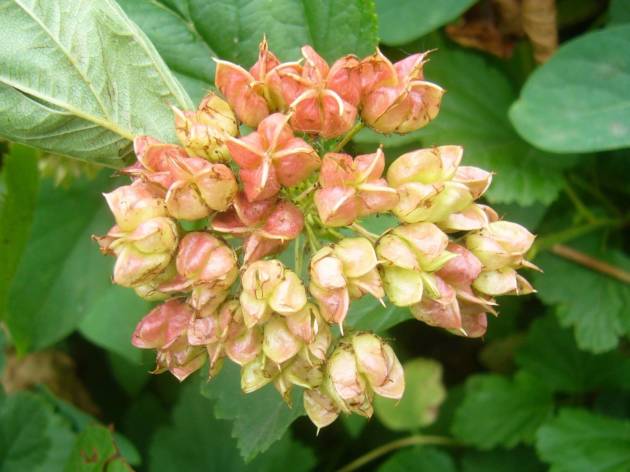
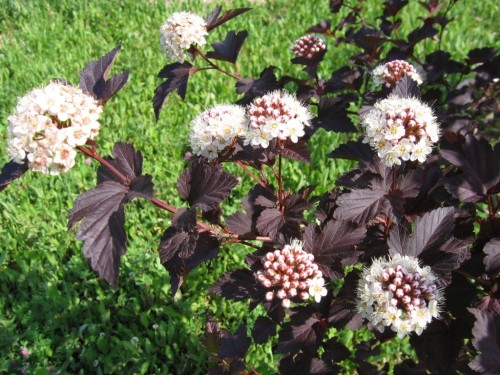
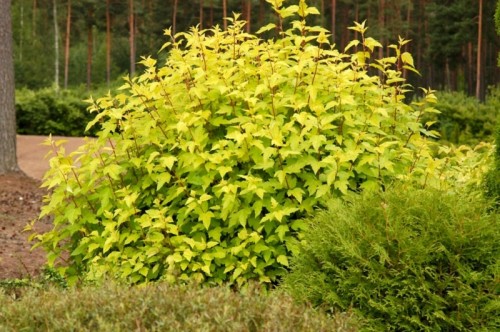
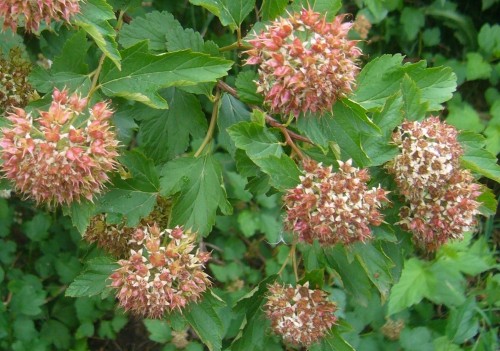
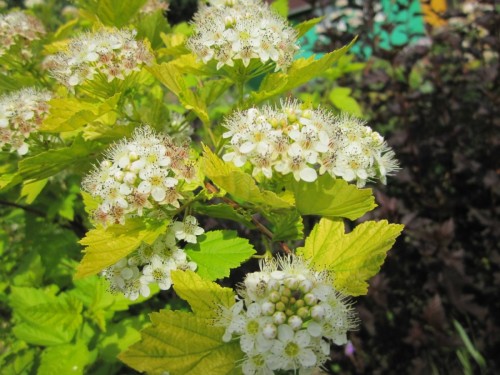
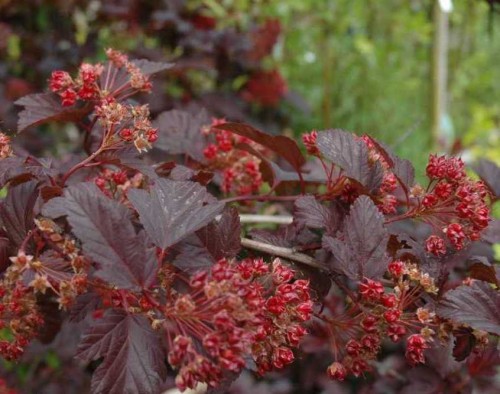
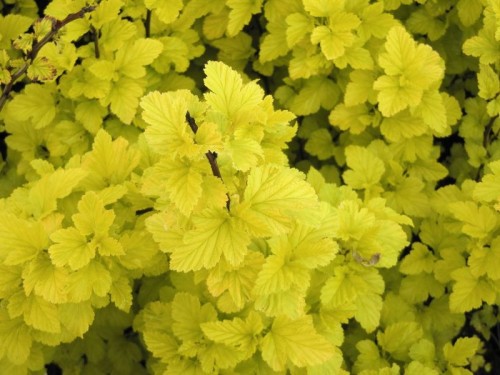
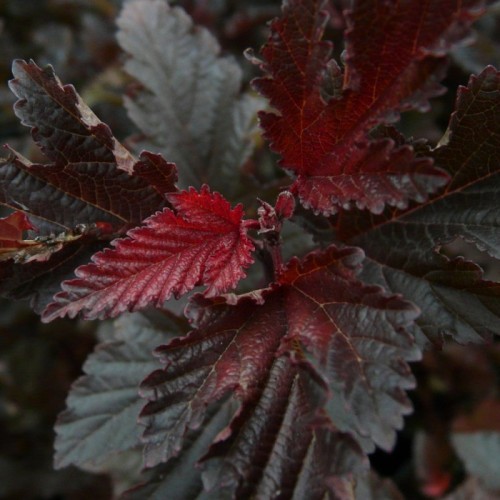
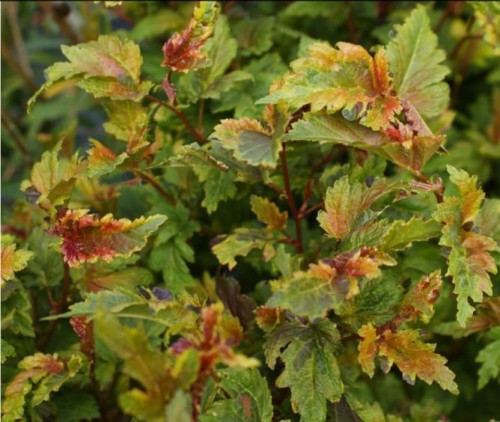
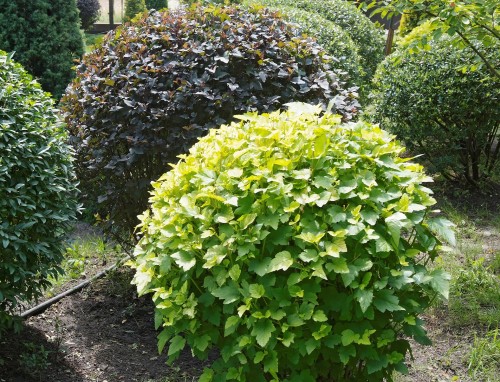
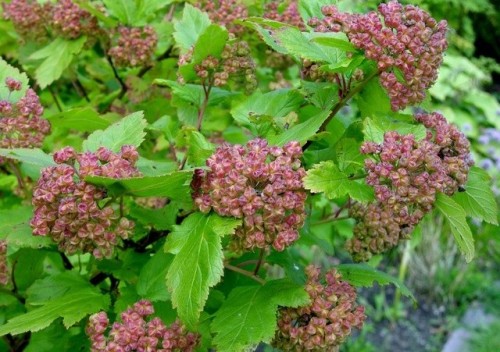
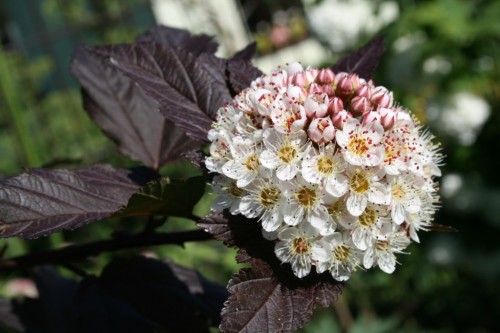













 Start a discussion ...
Start a discussion ...